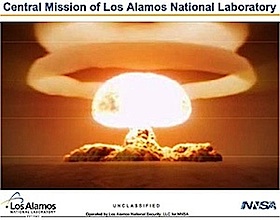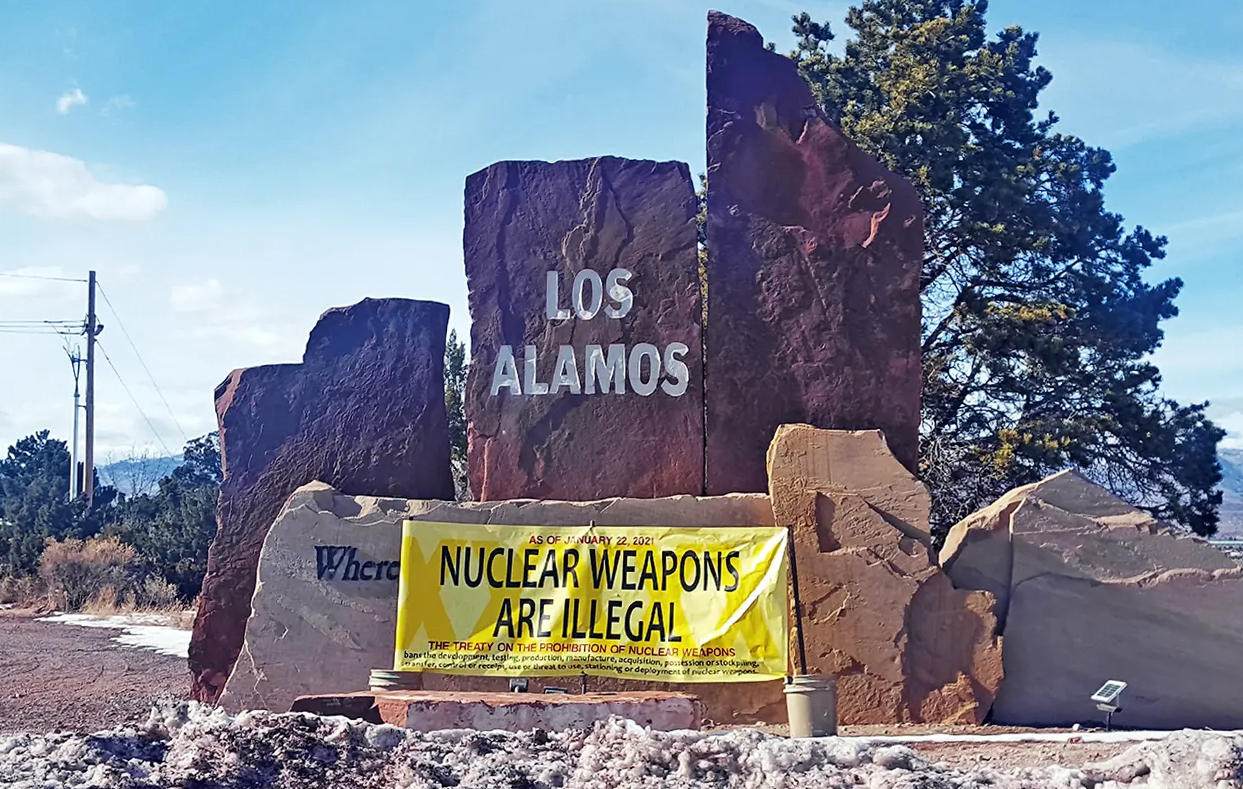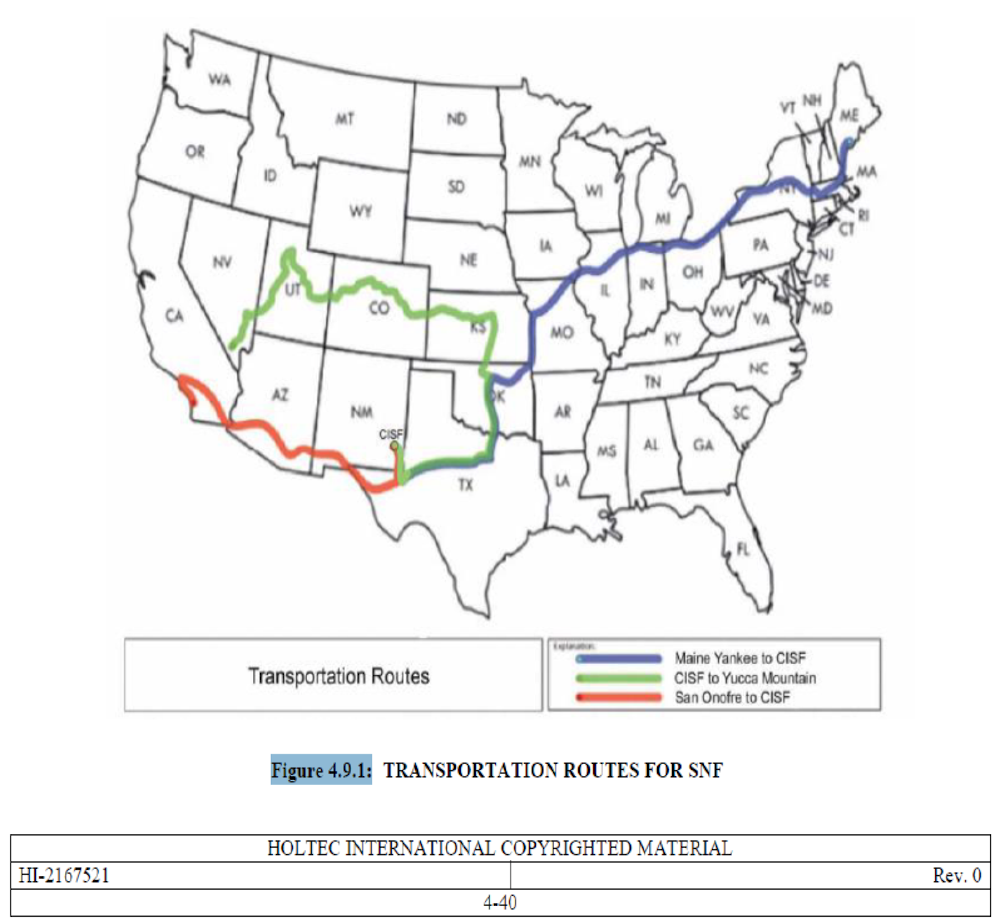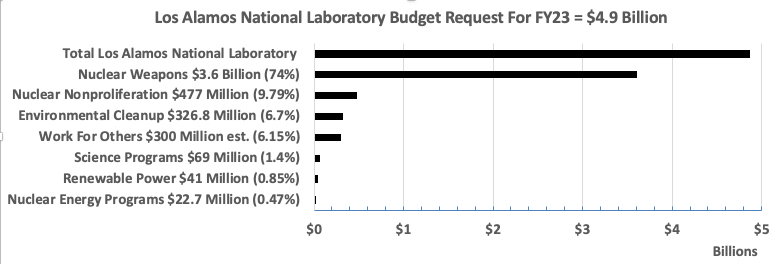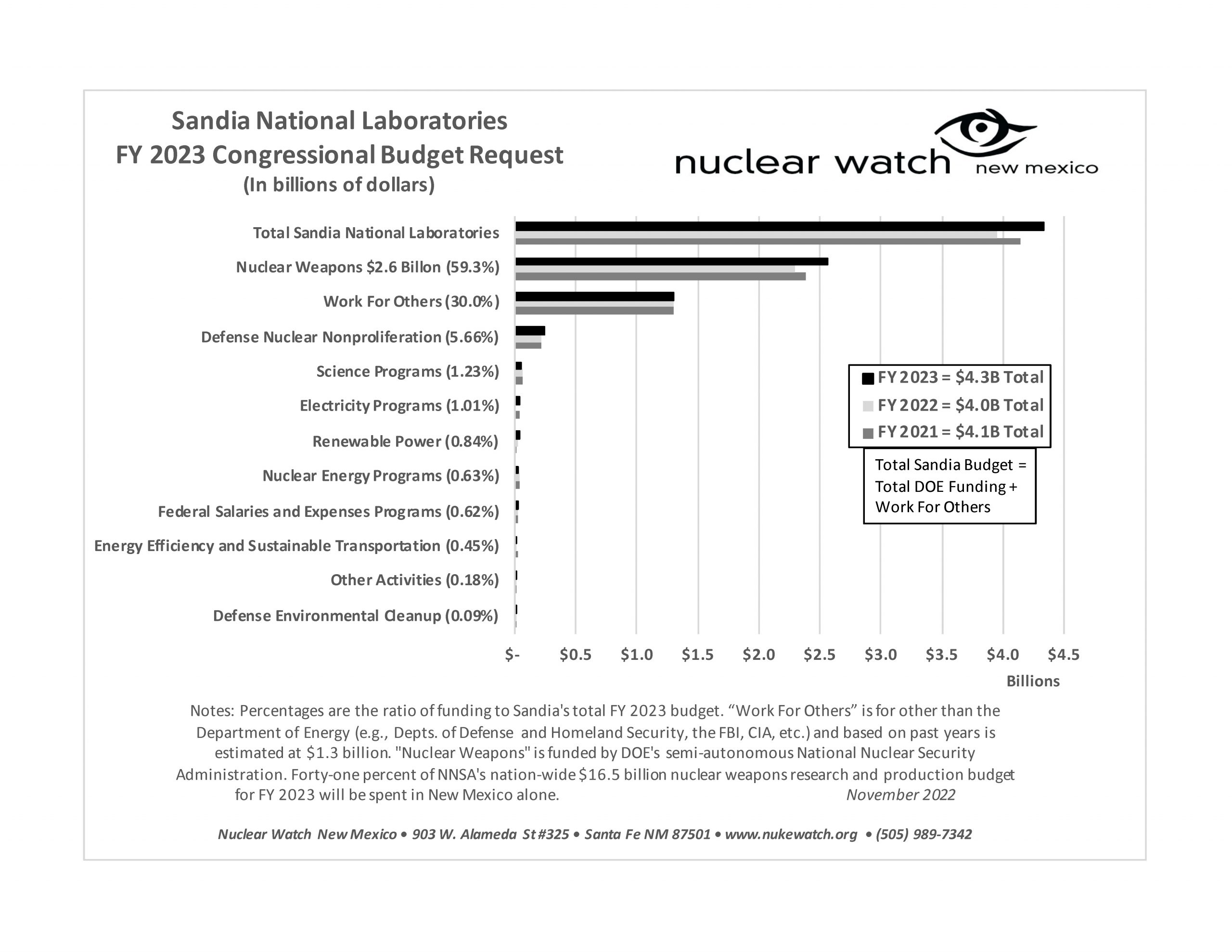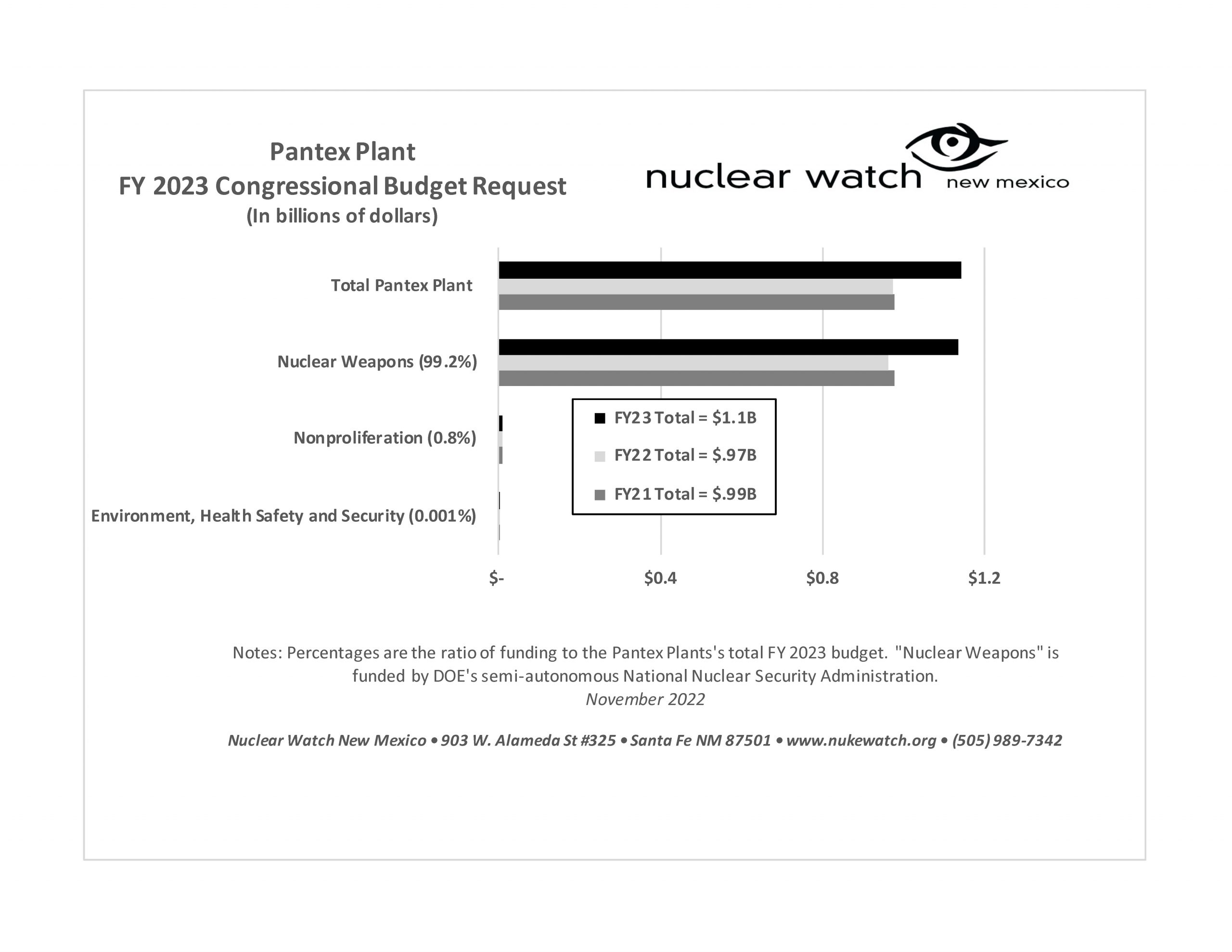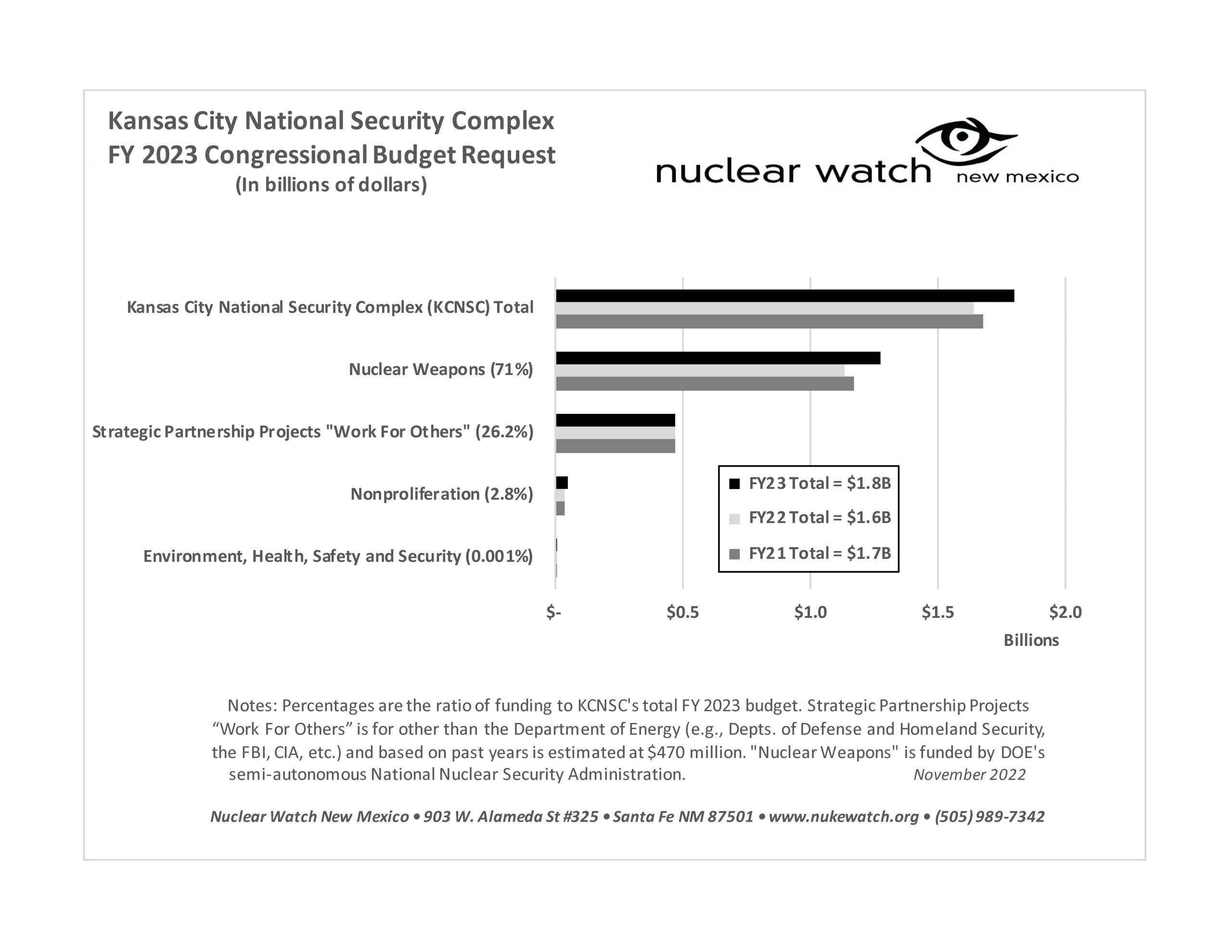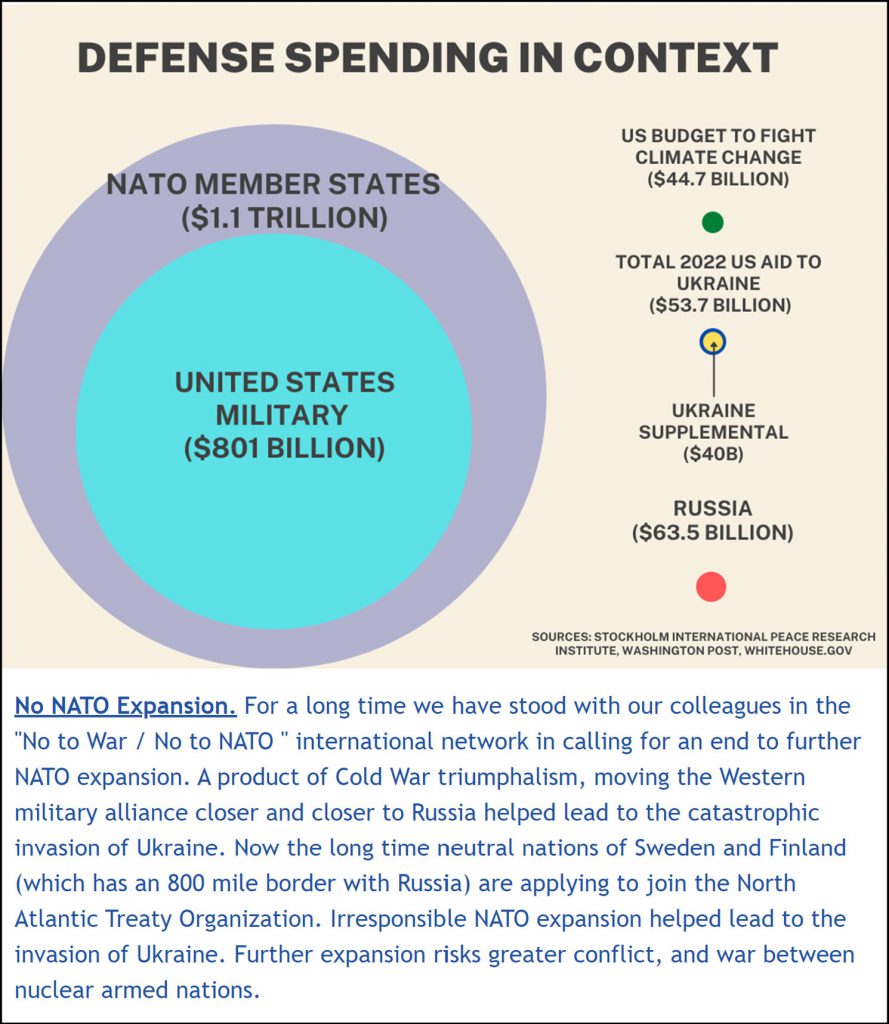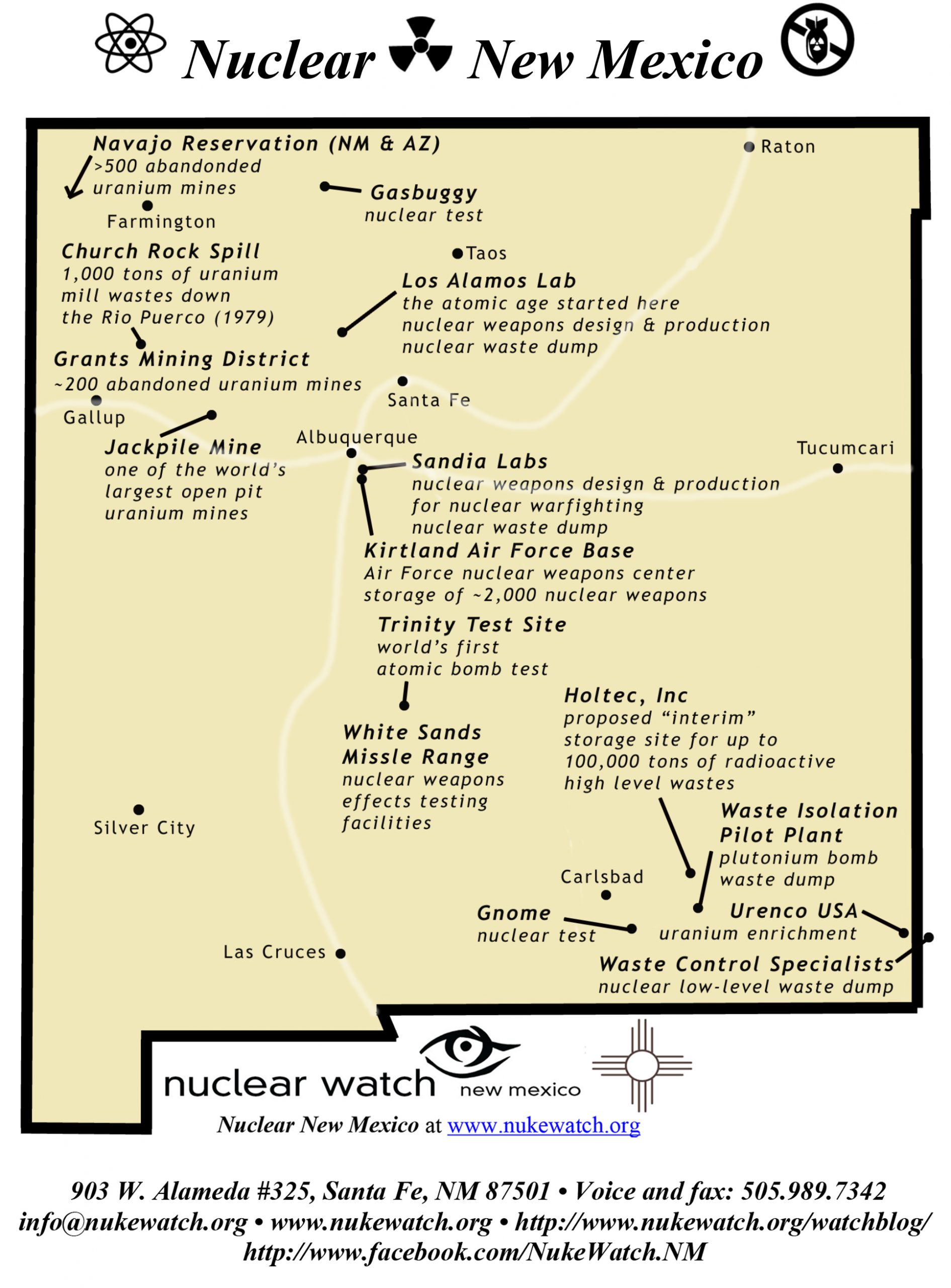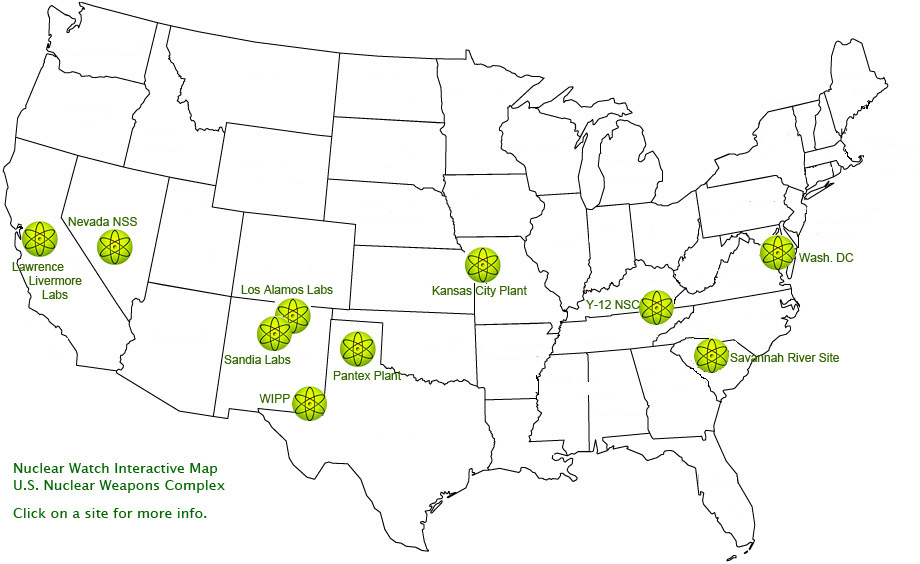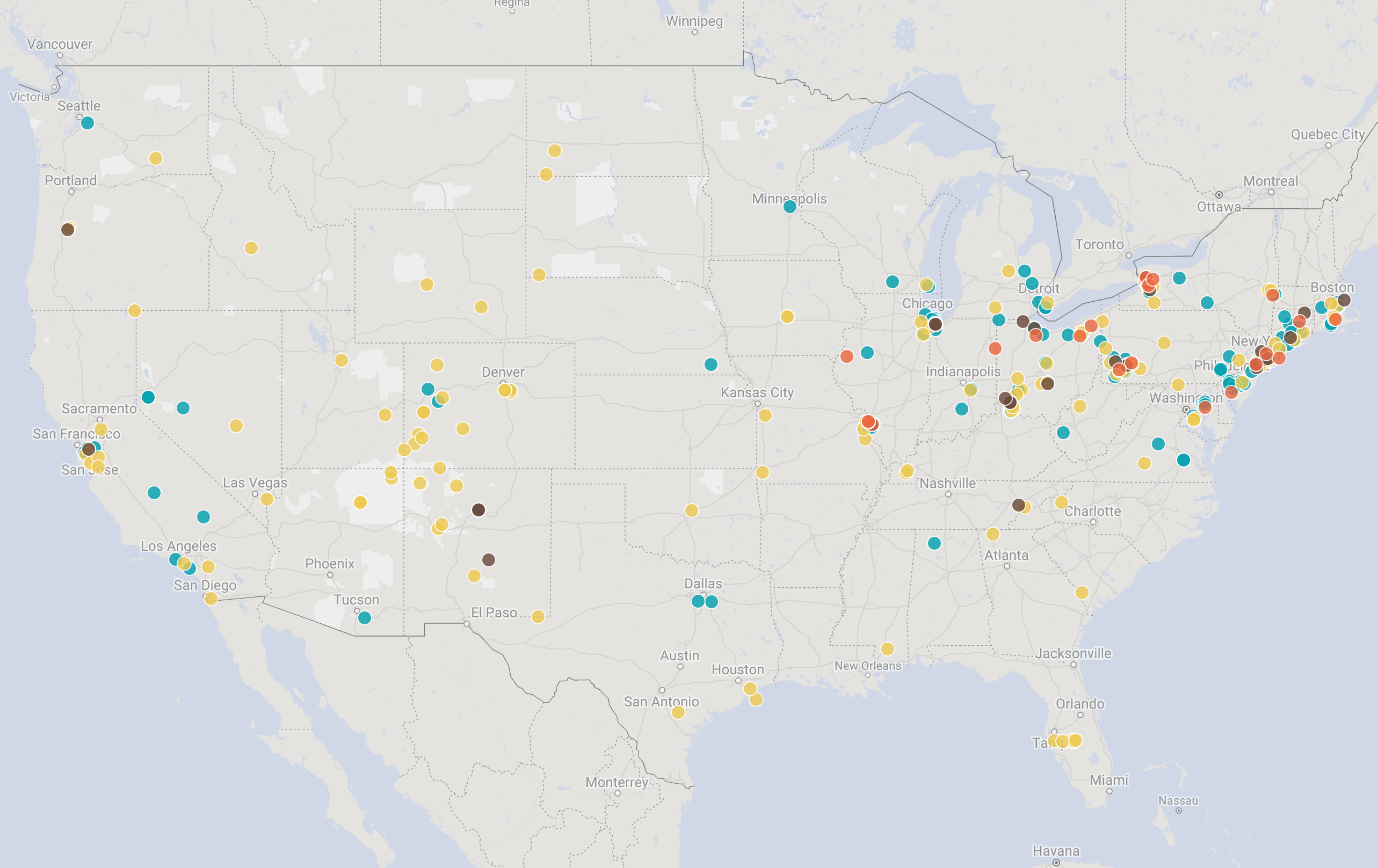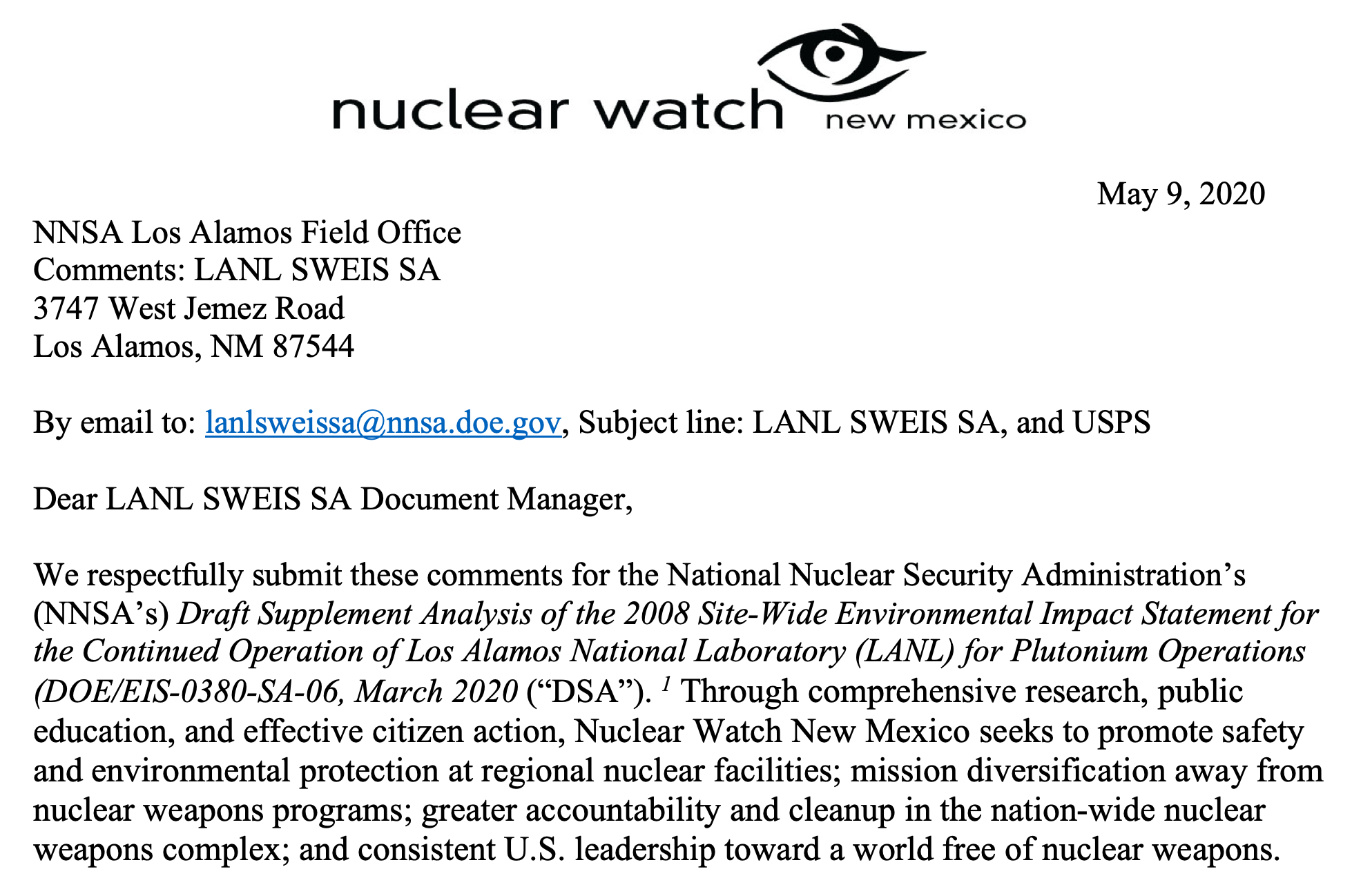QUOTE OF THE WEEK
Nothing Found
It seems we can’t find what you’re looking for. Perhaps searching can help.
LANL’s Central Mission: Los Alamos Lab officials have recently claimed that LANL has moved away from primarily nuclear weapons to “national security”, but what truly remains as the Labs central mission? Here’s the answer from one of its own documents:
LANL’s “Central Mission”- Presented at: RPI Nuclear Data 2011 Symposium for Criticality Safety and Reactor Applications (PDF) 4/27/11
Banner displaying “Nuclear Weapons Are Now Illegal” at the entrance in front of the Los Alamos National Lab to celebrate the Entry Into Force of the Nuclear Weapon Ban Treaty on January 22, 2021
Nothing Found
It seems we can’t find what you’re looking for. Perhaps searching can help.
Follow the Money!
Map of “Nuclear New Mexico”
Nuclear Watch Interactive Map – U.S. Nuclear Weapons Complex
In 1985, US President Ronald Reagan and and Russian President Mikhail Gorbachev declared that “a nuclear war cannot be won and must never be fought.”
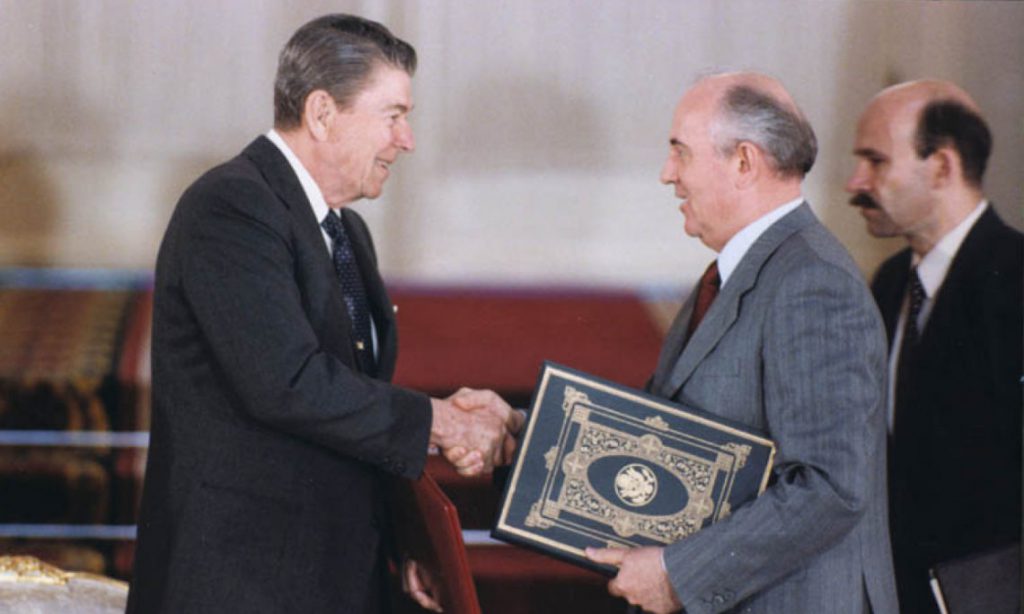
Waste Lands: America’s Forgotten Nuclear Legacy
The Wall St. Journal has compiled a searchable database of contaminated sites across the US. (view)
Related WSJ report: https://www.wsj.com
2022 BLOG POSTS
Nothing Found
It seems we can’t find what you’re looking for. Perhaps searching can help.
New & Updated
Scuttlebiz: Will ‘pit production’ save SRS?
“Don’t be lulled into a false sense of urgency by the federal law “requiring” pit production begin by 2030. That law carries as much weight as the 1982 federal act requiring the nation to have a nuclear waste repository at Yucca Mountain 12 years ago. Still waiting…”
DAMON CLINE | augustachronicle.com
It’s a choice that – from a local economic development perspective – isn’t much of a choice.
Here it is: 1) Convert the Savannah River Site’s unfinished Mixed Oxide Fuel Fabrication Facility into a nuclear weapons plant; or 2) Let the MOX plant keep rotting while New Mexico’s Los Alamos National Laboratory continues producing the nation’s stockpile of “plutonium pits.”
Considering that about $9 billion is at stake, and that SRS needs a new “mission,” I believe it’s safe to assume local leaders want what’s behind Door No. 1.
The National Nuclear Security Administration laid out the two alternatives last month in a draft environmental impact study addressing the nation’s need to manufacture 80 new nuclear weapon cores a year by 2030.
Huge Deficit = Defense Budget Cuts? Maybe Not
The congressional calendar and strategic inertia may come together to keep the defense budget relatively high. The calendar helps because the fiscal 2021 defense budget will likely be passed while Congress is in a free-spending mood.
BY: MARK CANCIAN| breakingdefense.com
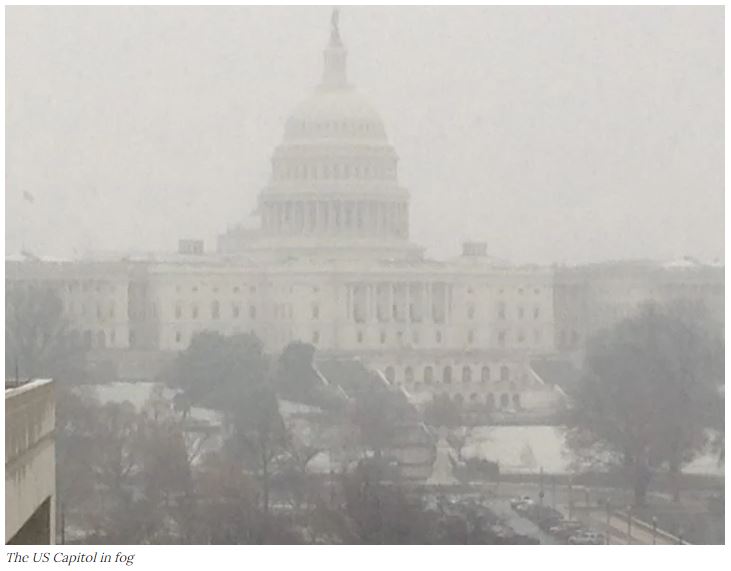
The current Washington consensus sees deep defense budget cuts in the face of soaring deficits driven by the emergency legislation to stabilize the American economy as it reels from the effects of the COVID-19 pandemic.
It may be wrong. The congressional calendar and strategic inertia may come together to keep the defense budget relatively high. The calendar helps because the fiscal 2021 defense budget will likely be passed while Congress is in a free-spending mood. The next administration — Republican or Democratic — will develop budgets beyond that, but the constraints of long-standing strategy will prevent major changes to force structure and acquisition that would drive deep budget cuts.
Will the Trump administration’s accusations doom the nuclear test ban treaty?
“Although US accusations are unlikely to be true, they could give a convenient pretext to officials who want to withdraw the US signature from the treaty, allowing the United States to resume its own nuclear testing. In fact, that may be the entire point.”
ANDREAS PERSBO | thebulletin.org
In April, while most of the world was focused on defeating a devastating viral pandemic, the US State Department quietly released its annual compliance report, describing whether and how the United States and other countries have been abiding by various arms control agreements. The report is sober reading for those hoping that the coronavirus would usher in a new era of international collaboration.
The report made waves for raising “concerns” about China’s adherence to a “zero-yield” nuclear testing standard, as called for by the 1996 Comprehensive Nuclear Test Ban Treaty. Although neither the United States or China has ratified the treaty, both have signed it, and both claim to abide by a nuclear testing moratorium.
Released From Silence
One year anniversary of the release of the documentary short film “The Atomic Soldiers”
“The Atomic Soldiers” lets the veterans who witnessed the Hood test in Nevada tell their own stories. But the painful memories sometimes choke their recollections, leaving long and moving silences in place of words. “You don’t send 14,000 troops through ground zero and not call it anything but genocide,” says one.
Ground U.S.-North Korean Diplomacy in International Law
In the midst of a global pandemic, it is clear that cooperative measures to tackle modern-day global security threats are critical.
By: Alicia Sanders-Zakre, Former NukeWatch NM Summer Intern | nationalinterest.org
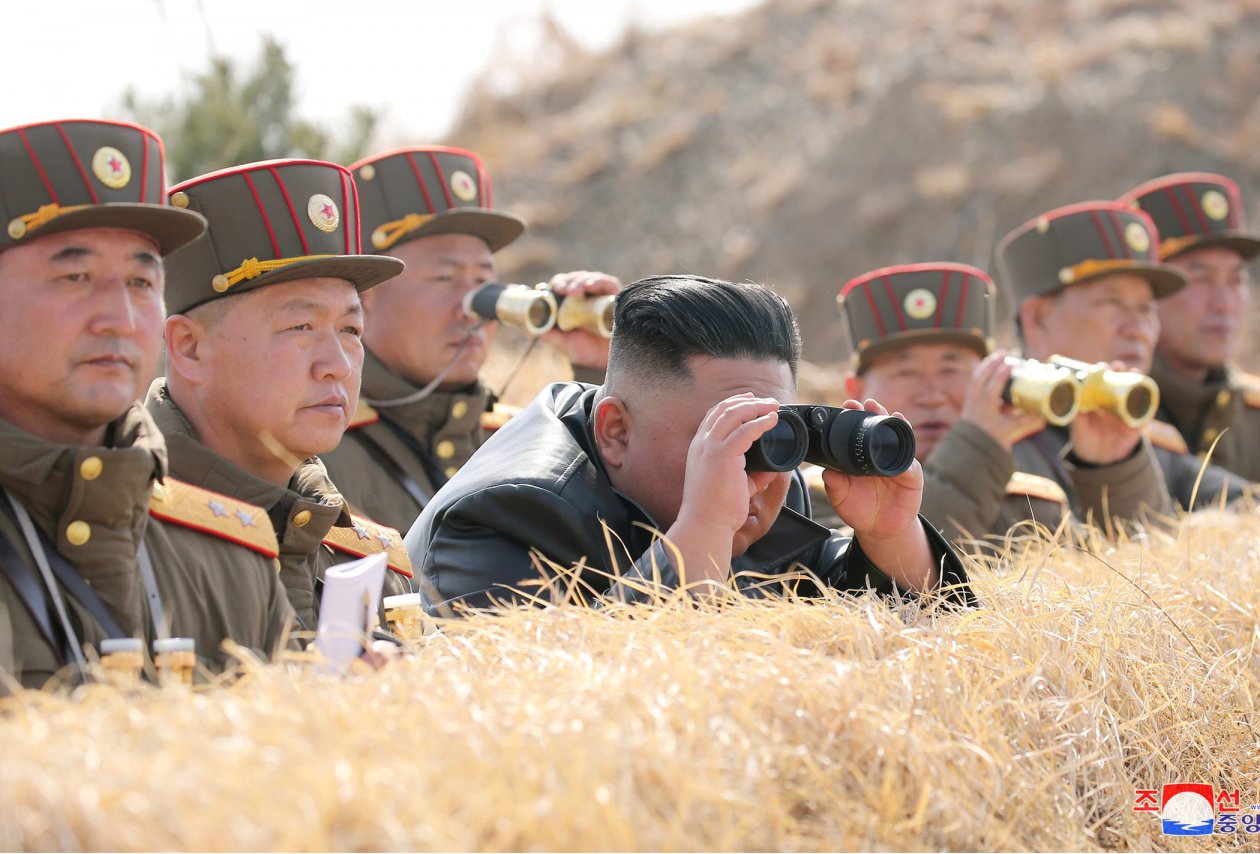
In the years since the summits between President Donald Trump and North Korean leader Kim Jong-un in Singapore and Hanoi, U.S.-North Korean diplomacy has fizzled to a halt. This is a grave mistake. Both North Korea and the United States need to get serious about reviving diplomatic efforts to eliminate their nuclear weapons.
In the midst of a global pandemic, it is clear that cooperative measures to tackle modern-day global security threats are critical. North Korean and U.S. nuclear weapons put the rest of the world at risk—and drain valuable resources from needed economic recovery efforts and social services. ICAN estimated that together North Korea and the United States spent $36 billion on nuclear weapons in 2019. The United States spent $35.4 billion and North Korea spent about $0.6 billion.
Trump Admin Sprints to Weaken Environmental Protections During Pandemic
‘There’s a lot they want to get done before the election, just in case.’
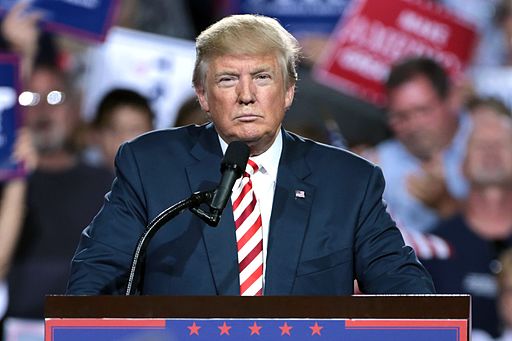
The Trump administration is diligently weakening U.S. environment protections even amid a global pandemic, continuing its rollback as the November election approaches.
During the COVID-19 lockdown, U.S. federal agencies have eased fuel-efficiency standards for new cars; frozen rules for soot air pollution; proposed to drop review requirements for liquefied natural gas terminals; continued to lease public property to oil and gas companies; sought to speed up permitting for offshore fish farms; and advanced a proposal on mercury pollution from power plants that could make it easier for the government to conclude regulations are too costly to justify their benefits.
Pit Production Must ‘Press Forward’ Despite Coronavirus Pandemic, NNSA Chief Says
Preparations and planning for plutonium pit production must continue amid the novel coronavirus pandemic, a “difficult” and challenging time, National Nuclear Security Administration chief Lisa Gordon-Hagerty wrote in a recent letter.
“The plutonium pit production mission is one of our highest national security priorities and is being done in accordance with congressional direction,” Gordon-Hagerty wrote to U.S. Sen. Tom Udall, a New Mexico Democrat. “We must press forward with this project in order to meet Department of Defense deliverables.”
Udall and U.S. Sen. Martin Heinrich, another New Mexico Democrat, in late April wrote to the National Nuclear Security Administration, asking the weapons-and-nonproliferation agency to extend a public comment period tied to plutonium pit production at Los Alamos National Laboratory, near Albuquerque and Santa Fe.
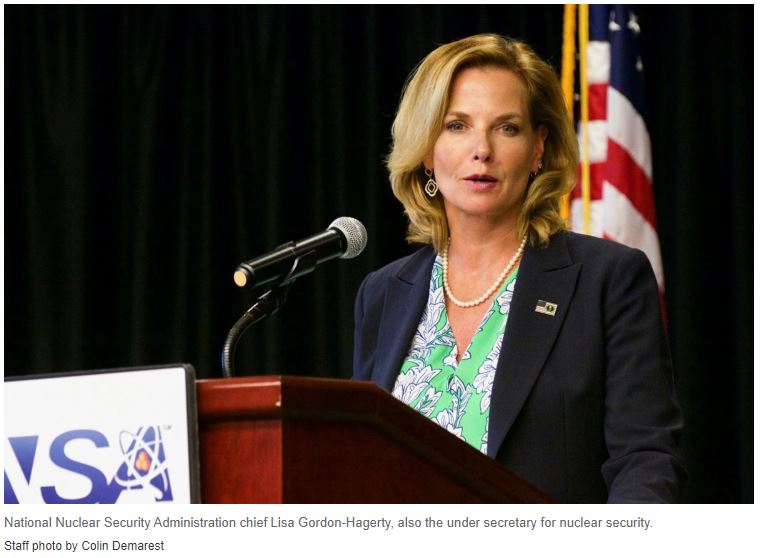
Gordon-Hagerty in her April 30 response said she appreciated the “interest in this matter” and that she takes the “concerns very seriously.”
Moving Forward With the W93 SLBM Warhead Strengthens U.S. and British Security
In his 2009 Prague speech, President Obama declared that “As long as [nuclear]weapons exist, the United States will maintain a safe, secure and effective arsenal to deter any adversary, and guarantee that defense to our allies.” To ensure that goal, he advanced a modernization program for America’s aging nuclear forces. President Trump, in his 2018 review of U.S. nuclear posture, reaffirmed that commitment and carried forward the program for force modernization that now will include a new program for a modern SLBM warhead—the so-called W93 to be carried in a new Mark 7 reentry vehicle.
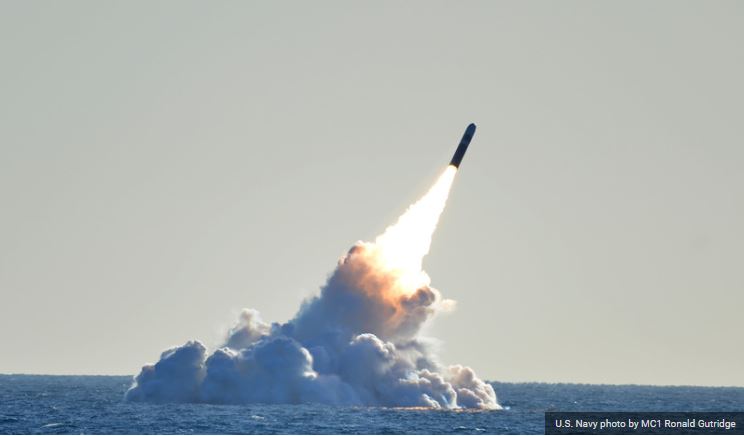
The requirement to maintain a safe, secure and effective arsenal is often taken to mean the replacement of America’s aging strategic triad forces and their command and control. That effort, while truly vital, is only half what is needed.
Bulging Deficits May Threaten Prized Pentagon Arms Projects
WASHINGTON — The government’s $3 trillion effort to rescue the economy from the coronavirus crisis is stirring worry at the Pentagon. Bulging federal deficits may force a reversal of years of big defense spending gains and threaten prized projects like the rebuilding of the nation’s arsenal of nuclear weapons.
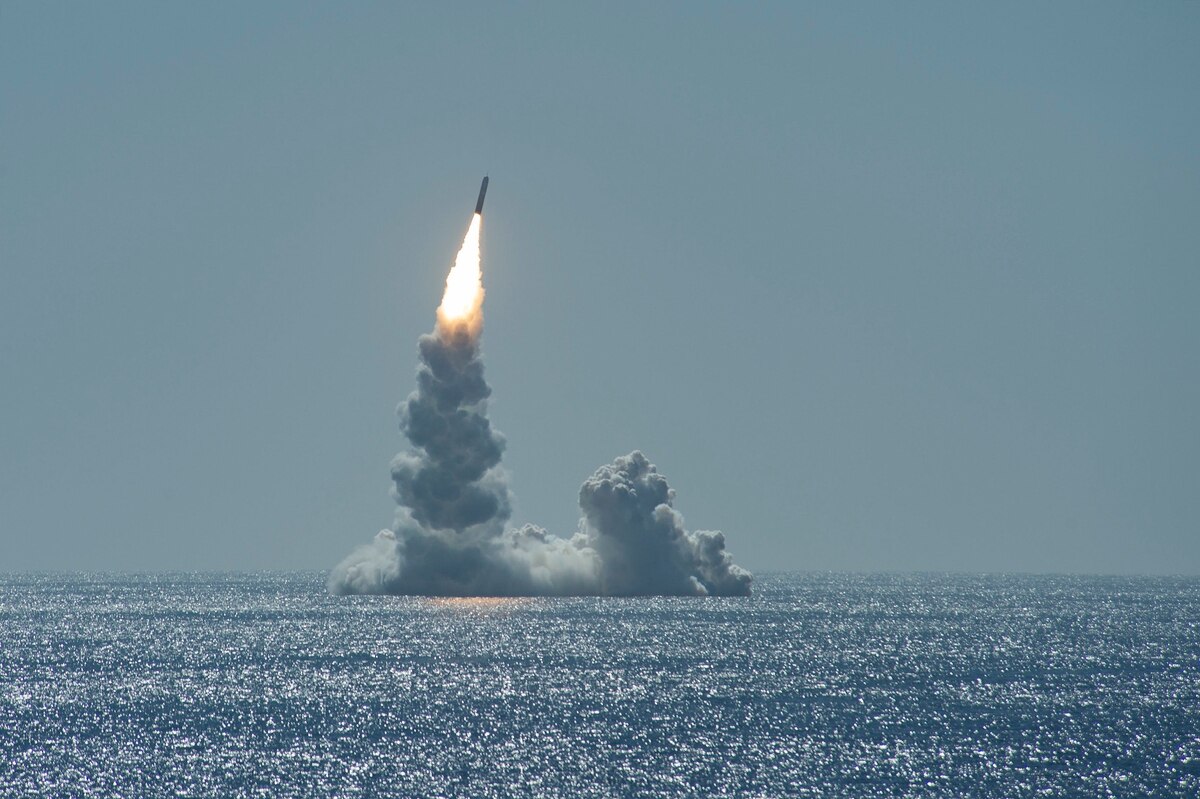
Defense Secretary Mark Esper says the sudden burst of deficit spending to prop up a damaged economy is bringing the Pentagon closer to a point where it will have to shed older weapons faster and tighten its belt.
“It has accelerated this day of reckoning,” Esper said in an Associated Press interview.
It also sets up confrontations with Congress over how that reckoning will be achieved. Past efforts to eliminate older weapons and to make other cost-saving moves like closing under-used military bases met resistance. This being a presidential election year, much of this struggle may slip to 2021. If presumptive Democratic nominee Joe Biden wins, the pace of defense cuts could speed up, if he follows the traditional Democratic path to put less emphasis on defense buildups.
ENOUGH IS ENOUGH: 2019 GLOBAL NUCLEAR WEAPONS SPENDING
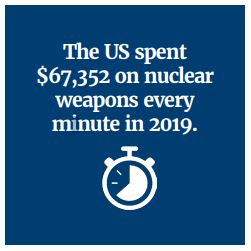 The nuclear-armed states spent nearly three-quarters of one hundred billion dollars in 2019 on building and maintaining nuclear warheads and delivery systems. The incalculable human and environmental costs of nuclear weapons only add to this shocking figure. From 2018 to 2019, there was an estimated $7.1 billion increase in nuclear weapon spending, and these totals will only continue to rise in the next decade according to documented nuclear weapon programmes and budgets in several nuclear-armed countries.
The nuclear-armed states spent nearly three-quarters of one hundred billion dollars in 2019 on building and maintaining nuclear warheads and delivery systems. The incalculable human and environmental costs of nuclear weapons only add to this shocking figure. From 2018 to 2019, there was an estimated $7.1 billion increase in nuclear weapon spending, and these totals will only continue to rise in the next decade according to documented nuclear weapon programmes and budgets in several nuclear-armed countries.
COLLECTIVE COMMENTS: on the National Nuclear Security Administration’s (NNSA’s) Draft Supplement Analysis of the 2008 Site-Wide Environmental Impact Statement for the Continued Operation of Los Alamos National Laboratory (LANL) for Plutonium Operations
These comments were signed onto by over 100 individuals and organizations.
THANK YOU to all those who participated!
Help Us Stop Expanded Plutonium Pit Production at the Los Alamos Lab! Submit Written Formal Comment.
Click to See Suggested Comments
Due Saturday May 9 but generally the government will accept comments for the following week.
See Updated Plutonium Pit Production Fact Sheet Here
DOE Repeatedly Asks Safety Board for Time Extensions, Los Alamos Lab Asked for >150 Cleanup Milestone Extensions, But During Pandemic NNSA Rejects NM Senators’ Request for Extension of Public Comment on Plutonium Bomb Core Production
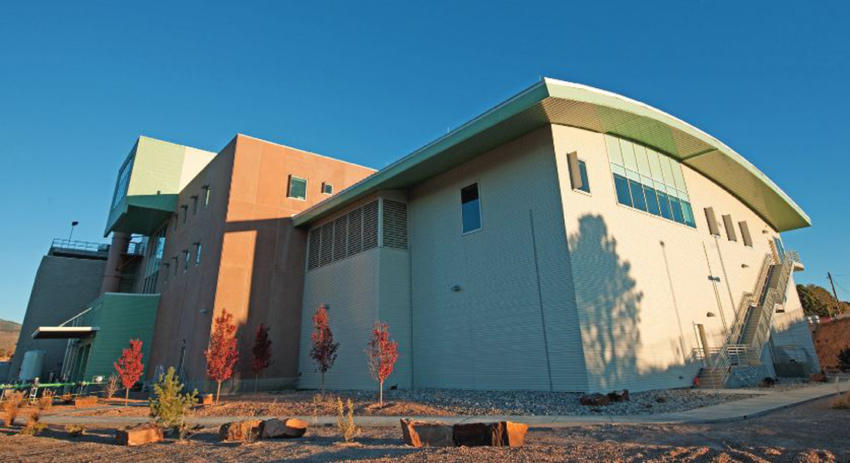
Lisa Gordon-Hagerty, head of the National Nuclear Security Administration (NNSA), has rejected a request by New Mexico Senators Tom Udall and Martin Heinrich to extend the public comment period on expanded plutonium “pit” bomb core production because of the COVID-19 pandemic. In contrast, even in normal times NNSA and its parent Department of Energy routinely ask other government agencies for major time extensions when it comes to cleanup and independent oversight.
The two Senators requested a 45 day comment period extension on behalf of more than 120 organizations and individuals. Before that, Tom Udall and Martin Heinrich were among 24 Senators who asked the Office of Management and Budget to extend all federal public comment periods during the coronavirus national emergency.
ACTION ALERTS
Nothing Found
It seems we can’t find what you’re looking for. Perhaps searching can help.
Nothing Found
It seems we can’t find what you’re looking for. Perhaps searching can help.
Interfaith Panel Discussion on Nuclear Disarmament - August 9
Nothing Found
It seems we can’t find what you’re looking for. Perhaps searching can help.
New Nuclear Media
Nothing Found
It seems we can’t find what you’re looking for. Perhaps searching can help.

